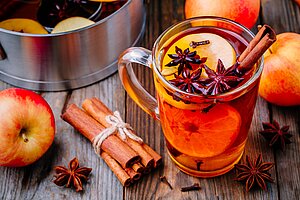 While flavor trends come and go, some flavors are indelibly tied to a season. You can’t think of watermelon without being transported to summer cookouts, for example. The taste of peppermint may bring to mind Christmas trees and crackling fires.
While flavor trends come and go, some flavors are indelibly tied to a season. You can’t think of watermelon without being transported to summer cookouts, for example. The taste of peppermint may bring to mind Christmas trees and crackling fires.
But seasonal flavors go deeper than the customary classics. As a restaurateur, mixologist, or food manufacturer, you may constantly struggle to keep a balance between what’s traditional and what’s trending.
You need to stay up-to-date with current and upcoming flavors that are grabbing consumer interest so you can remain relevant, drive innovation, and get ahead of the curve on pending trends. What seasonal flavors should you focus on over the next year?
The Floral Enchantment of Spring
Bright floral and herbal flavor profiles are popular in the transitional season of spring, when winter weather has begun to give way to warmer temps and budding greenery. Recent flavor trends for this season have embraced the sweet zing of lemon and blueberry, as well as the tropical appeal of hibiscus.
What’s on the radar for next spring? Lemon treats will see an upgraded pairing with complex and sophisticated lavender, while blueberry will lean in on sweetness by teaming up with rhubarb. On the savory side, legumes (including peas and lentils) will get a makeover from sweet, cooling mint.
The Sweet Symphony of Summer
Summer produce is legendary for its abundance and sweetness, and tropical fruits like pineapple, mango, guava, and passionfruit are currently dominating beverages, desserts, salads, and even grilling menus.
The swicy trend is also in full swing, with entries like Tajín-sprinkled watermelon and spicy tropical drinks. Don’t think swicy will be on the way out, though. Look for more adult bevs that feature hotter peppers, including jalapeños and habaneros.
As for summer fruits and vegetables, exotic ingredients like ube, tamarind, and guanábana (which tastes a bit like pineapple and strawberry) are starting to gain consumer attention. Expect these flavors to pop up in ice cream and other summer treats.
For more trends and exciting insights, sign up for our weekly newsletter HERE
The Savory Tour Through Autumn
Warm, sweet spices are the hallmark of cooler autumn months, with pumpkin spice maintaining a strong lead. Current trends favor sweet, spicy cinnamon and caramel, with its rich, buttery, sweet, and salty profile that has everything you need to create cozy vibes for fall.
However, many businesses are swerving to embrace a slightly brighter fall flavor palette with inclusions like crisp apple, fig, and pomegranate.
While the new Starbucks menu this fall features two pumpkin bevs, for example, it also has three apple creations. Figs have been spotted topping frozen pizzas and nestled among charcuterie spreads, and pomegranate seeds can add zing to salads and main dishes.
Related: Reimagining Comfort Food: Nostalgia Meets Innovation in Today's Culinary Trends
The Brisk Bite of Winter
The winter season offers an interesting combination of flavor profiles. Cold weather is ideal for warm, spicy stews and rich, savory meat dishes that feel a bit indulgent, but it also lends itself to bright, zesty flavors like cranberry and peppermint that awaken sleepy senses.
In the upcoming season, look for a blend of these two principles. Sweet, sharp gingerbread looks to have a moment this winter, going beyond Biscoff cookie butter desserts to embrace pairings like gingerbread with dark chocolate, blueberries, and lemon curd. It can also be added to savory preparations like meatloaf or add surprising flair to buns for burgers or breaded chicken sandwiches.
Putting Your Stamp on Seasonal Flavors
To a degree, consumer preferences and interests direct the course of flavor trends, and certain seasonal flavors will always remain in demand. However, those in the food industry can track trends and use them to inform seasonal menus, updating classics to offer the innovation consumers crave without turning away traditionalists.
To learn more about Symrise and other food trend insights, contact the team today!






